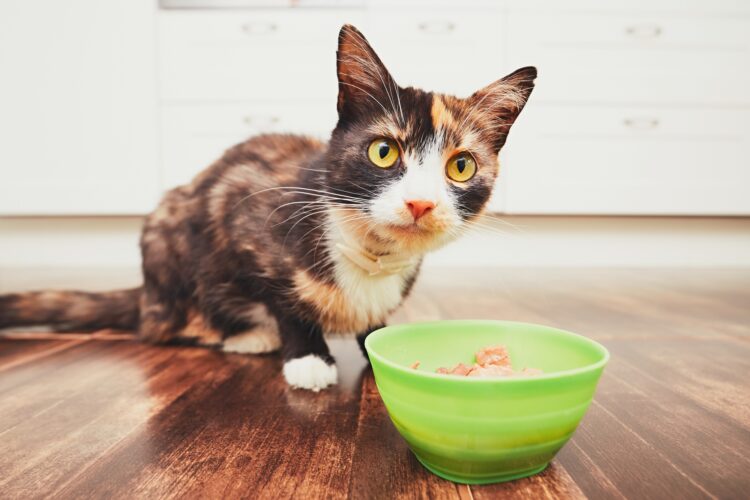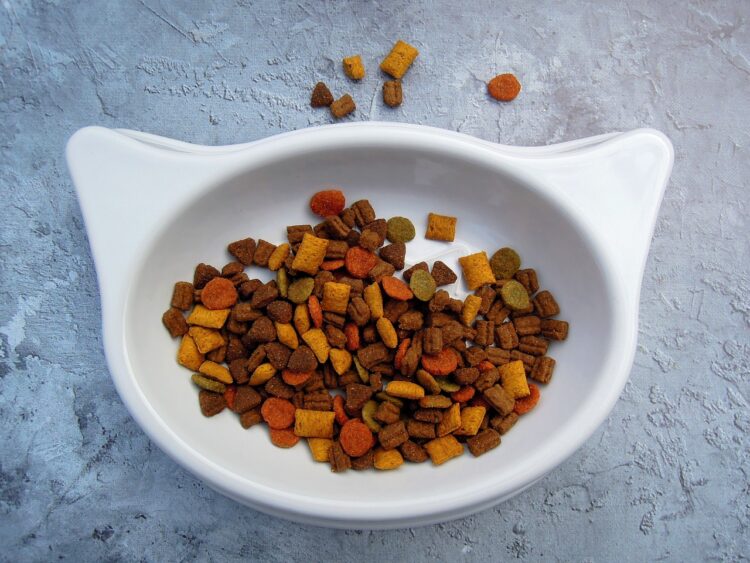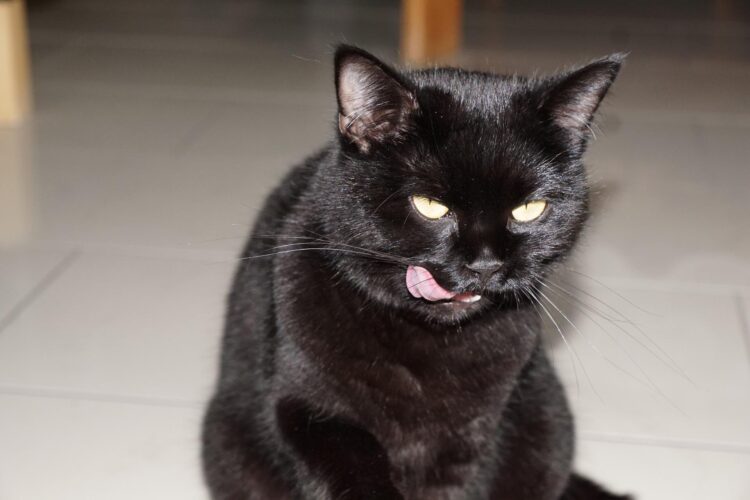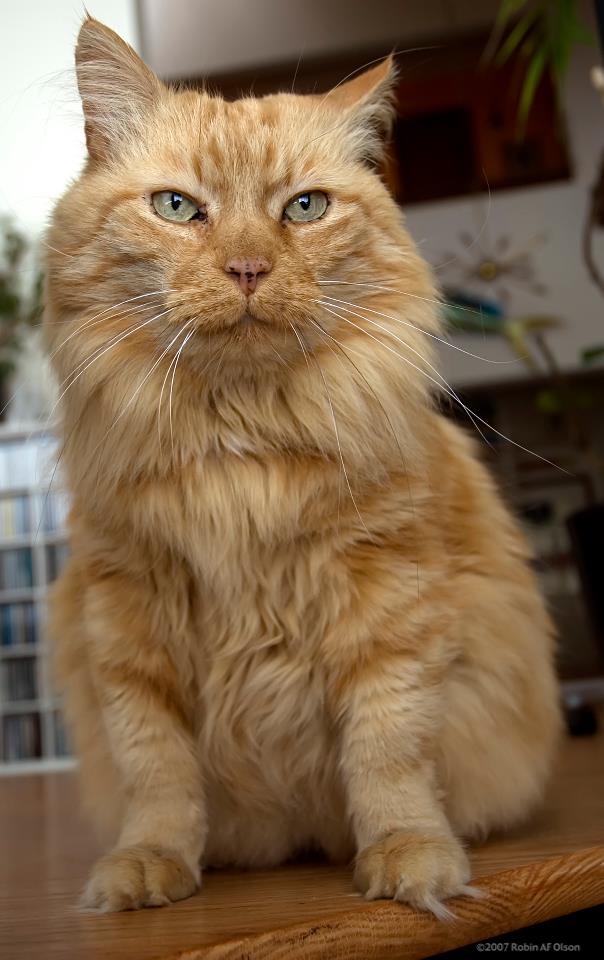
There aren’t many things that are more worrisome for cat parents than a cat who won’t eat. Whether it’s because they’re sick or simply finicky eaters, inappetence in cats can become a potentially life-threatening problem if not addressed sooner rather than later.
Why maintaining appropriate food intake is important for cats
Cats are obligate carnivores, which means they need adequate amounts of protein in their diet. If they don’t get enough protein, they will catabolize muscle. Cats who don’t eat for more than 24 to 48 hours are at risk of hepatic lipidosis (fatty liver.) When cats are undernourished or starved, they will metabolize their own fat reserves for energy. This fat is then released to the liver, where it is not processed efficiently and stored there, leading to a fatty and low functioning liver. If not treated this condition can be fatal.
First law of feline medicine: No matter what, you have to keep cats eating!
Appetite has been strongly lined to quality of life, which is why getting a cat to eat is especially crucial to keep sick cats eating.
What causes food aversion?
Unfortunately, cats have long memories and food aversion can be a real problem, especially with sick cats. It becomes a vicious cycle: the cat feels sick, eats a little bit, feels even more nauseous, and then associates the food with feeling sick.
Food aversion can also be caused by syringe feeding. Syringe feeding, also known as force feeding, was long considered an acceptable method to try to get nutrition into sick cats, but it can be a miserable process for both cat and human. Force feeding can cause undue stress on an already sick cat, which is not only detrimental to the cat’s healing process, but can completely destroy the bond between cat and human.
What helps enhance a cat’s appetite?
Aside from the basics – a high protein, grain-free raw, gently cooked or premium canned diet – cats appetite responds to
- Odor: the smellier the food, the more likely cats are going to be interested in it.
- Texture: for some cats, texture can make a difference. Some cats prefer pate style foods, while other like morsels or chunks.
- Temperature: never offer food straight from the refrigerator. Cats prefer food at body or room temperature.
- Add water: for some cats, adding water may encourage them to eat.
- Meal toppers: There area variety of meal toppers available to enhance the flavor of any food. Our favorite is nutritional yeast.
Nutritional yeast: the secret weapon to get finicky cats to eat
I’ve found that nutritional yeast can act like “kitty crack” for even extremely finicky hold outs. Simply sprinkle a small amount over food.
Nutritional yeast is deactivated yeast that is grown on sugarcane or beet molasses. It is sold in the form of flakes or as a yellow powder. It has a strong nutty or cheesy flavor, which is why it is used as a cheese substitute in many vegetarian or vegan recipes. It is a great source of B vitamins, a good source of potassium, and is nearly 50% protein. It is naturally low in fat, sodium and it is sugar and dairy free.
Nutritional yeast is different from brewer’s yeast, which is a by-product of the beer brewing process. Brewers yeast also contains many vital nutrients, but has a more bitter taste. Some cats seem to like it, but if you want to try brewer’s yeast, make sure to read labels: some manufacturers will add garlic, which is toxic to cats.
Medications that enhance appetite
There are a number of medications available for cats that can help prevent nausea and enhance appetite. Your veterinarian can advise you as to which medications are appropriate for your cat’s condition.
Feeding tubes
Most cat parents will balk at the idea of a feeding tube. In human medicine, feeding tube placement has end-of-life connotations. Nothing could be further from the truth in feline medicine. “Feeding tubes shorten hospital stays, reduce the stress of administering medications, and ensure that nutrition, one of the most important aspects of healing, happens safely and effectively,” says Dr. Elizabeth Colleran, a feline veterinarian and owner of Chico Hospital for Cats. “They can aid in recovery from any illness that involves multiple medications, significant oral pain or any other condition that would cause a cat not to want to eat.”
One of the best articles I’ve seen anywhere about the benefits of feeding tubes can be found on Dr. Kristopher Chandroo’s website. Dr. Kris is a veterinarian and owner of The 100x Vet in Ottawa, Canada. He shared the experience of one of his clients with a feeding tube in his comprehensive article, What to Do When They Won’t Eat at All: Pina and the E-Tube. Pina’s guardians share what worked and what didn’t work for them.
If you have any tips or tricks that worked for you to get cats to eat, please share them in a comment!
This post was first published September 2022 and has been updated. Image Depositphotos.








As you have mentioned numerous times, cats love sunshine. One thing that goes with sunshine is skin cancer. I have read notices from cat parents that their kitty has developed such and now our kitty has what could possibly be pre cancer on her ear and nose. Are there any cat sunscreens that you can recommend. I’ve looked online and see hundreds that state “we’re the best”… but, I need an opinion from a true cat lover.
I would ask your vet for a recommendation, Terry. Be aware, though, that even the safest sunscreen may not be all that effective for cats, since cats tend to groom off anything topical that you put on them.
I have gone to the local pet store, and two different vets for advice on sun screens. None of the 3 had sun screens available, and one vet said use “baby sunscreen”. I read the active ingredients on numerous baby sunscreens and it was zinc oxide, which is toxic to cats. I’m still waiting for input from one other vet. Sooo, even vets give advice that’s harmful. Who can you trust? One vet said go online with “Chewy” , done that and as I mentioned to you, they have dozens of cat sun screens to choose from. Right now it’s no laying in the sunshine for our kitty, who loves her sun puddles. Quality of life is dwindling. Thank you Ingrid for return message.
When Pono was sick and wouldn’t eat, the vet said get cheap catfood. Not that it is really good for them, but it stinks worse than other foods and it would be more interesting to him. That worked. That and tuna.
Stinky food can definitely work wonders for some cats.
I got nutritional yeast flakes from my health food store, in their bulk section.
Then I found it in my supermarket …it is in their season aisle , the BRAGG brand….
And if they did not want to finish their food, if a dusted some more on it, they would eat it up.
However, at some point, Bragg, changed something in their formula …added the description “cheesy” seasoning, and the cats would not eat it. Your cats might…still the same stuff otherwise.
So I went back to the health food store for the regular stuff.
But what I noticed once they got it…And they are both outdoor cats…there were no more fleas or ticks.
They are 16 and have never been to the vet for anything, except their initial rabies shot.
I also gave them a probiotic powder which I sprinkled on their food…
And organice whole milk yogurt …
And they had very healthy looking bowel movements and no smelly litter box. all. A good sign.
My 16 yrs old Boo has hyperthyroidism and the beginning of renal failure, so fish isn’t allowed plus he’s acquired a poultry allergy. It’s really hard to find high quslity canned cat food without fish or poultry. He was OK with rabbit or lamb for awhile, but doesn’t want it now, so we’ve got him on an expensive New Zealand brand of canned beef and also beef baby food. His appetite is decreasing little by little but I do try to make sure he eats at least 6oz a day. He’s not interested in toppers or anything dry, but we’ll give the nutritional yeast a try.
Thanks for the information.
Dr. Berg says nonfortified yeast is better for the body than fortified yeast. So I bought the NONfortified yeast for my cat from Amazon. Will that one work as well as the other one?
I’ve never tried non-fortified yeast. As far as I know, the difference is that one has synthetic vitamins added, the other one doesn’t. I don’t know how that will impact flavor, which is really what we’re looking for to entice cats to eat. If you decide to try it, please let us know whether it worked for you!
The Bragg brand does not say anything about non fortified , what ever that us,
when I have mentioned ti to people, they said they use it on their popcorn
Great idea re: the Nutritional Yeast. Will get some to keep on hand. I would give Tasha some deli chicken or turkey breast or even liver sausage when she is off on her eating. I also will try another can of food if she is finicky. My vet suggested pumpkin, but she is not a fan of that.
Where do you get Nutritional Yeast nevered heard of it. I use too use Brewer’s yeast and that was for fleas. Since they took a lot of flavors my cats use too eat off the market for whatever reason I can’t find too much for Tiger who is 6 yrs old and very picky My 11 yr old Ms. Mida isn’t too picky but she isn’t eat like she use too. I had the vet look at both of them. They are fine.
Whole Foods and most regular grocery stores carry it. You can also order it online https://amzn.to/3SFfs3a
We went through this with Pono all the time. My vet recommended the smelliest food (like one of the suggestions in your article). He said he didn’t recommend feeding cheap food, but he said usually the cheaper it is, the smellier it is. That and tuna used to get Pono eating again. Thank you for the other suggestions too.
I have been feeding my cats a complete nutrition raw food for about 3 years. They are doing well on it. I add flavor and texture variety through meal toppings. (I also add variety for one cat with a slow feeder licking mat. ) My cats enjoy freeze dried, meat treats. I started crumbling those, then adding them as a topping to their raw food. This works for us. I’m going to try nutritional yeast as a topping. Thanks for the information.
Thanks for this great piece of information – I will try nutritional yeast. My rescued cat, Gato, is so picky with food. Reading this article, I think that maybe this is because of the rough 3 months at the vet after her rescue (and in Egypt, vets are not used to treat cats…). Since I got her, I see Gato can identify what brands have better protein, so I always get her the premium wet food 🙂 Some days, however, Gato just won’t eat, even this fancy treats! She is still playful and I know she is not sick. I will be more mindful of temperature and others points flagged in this post. Thank you so so much.